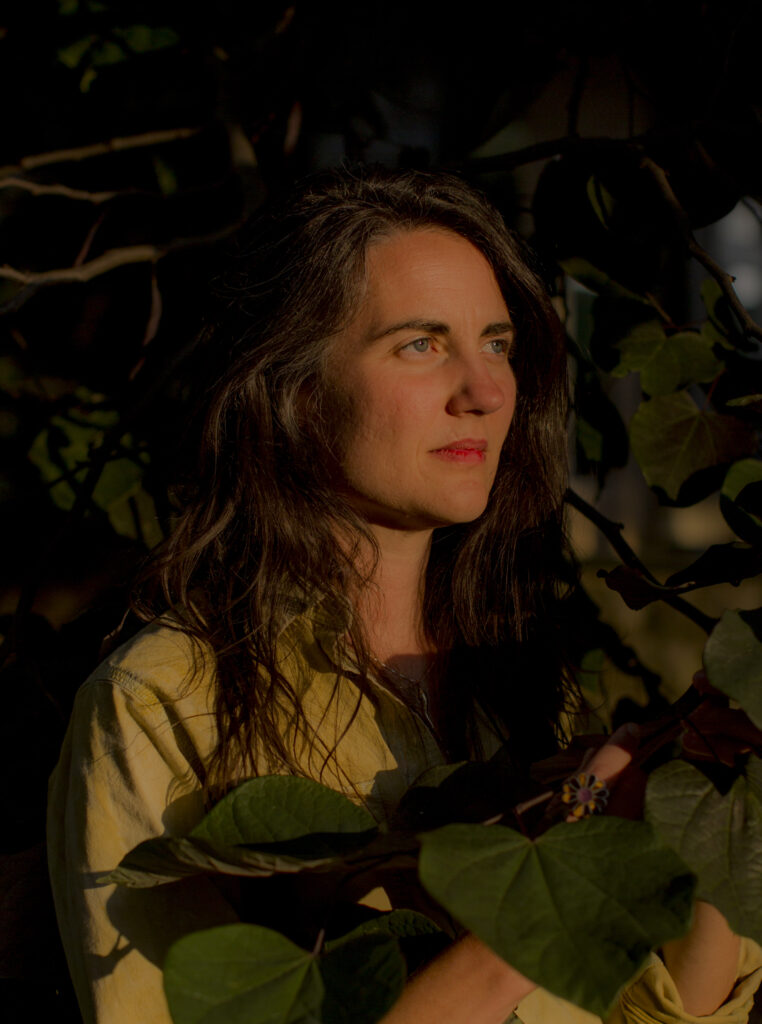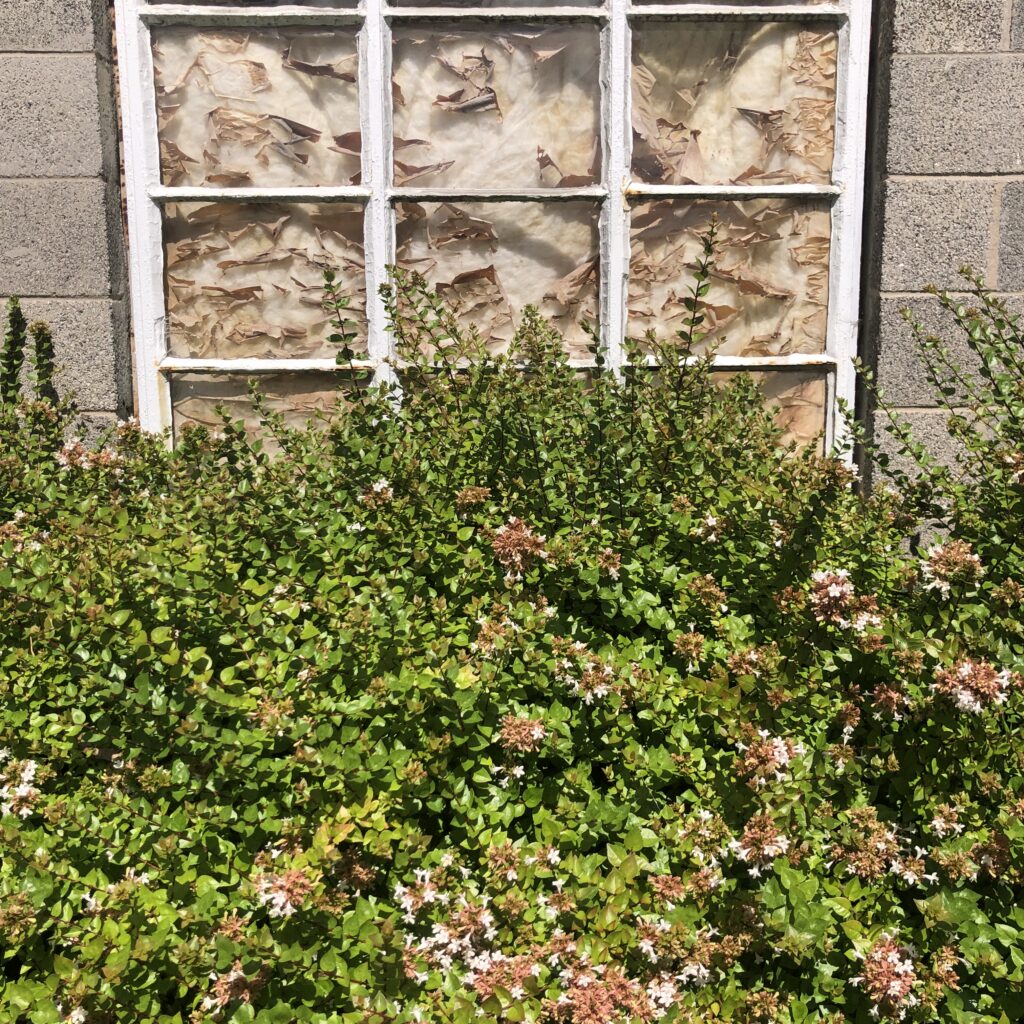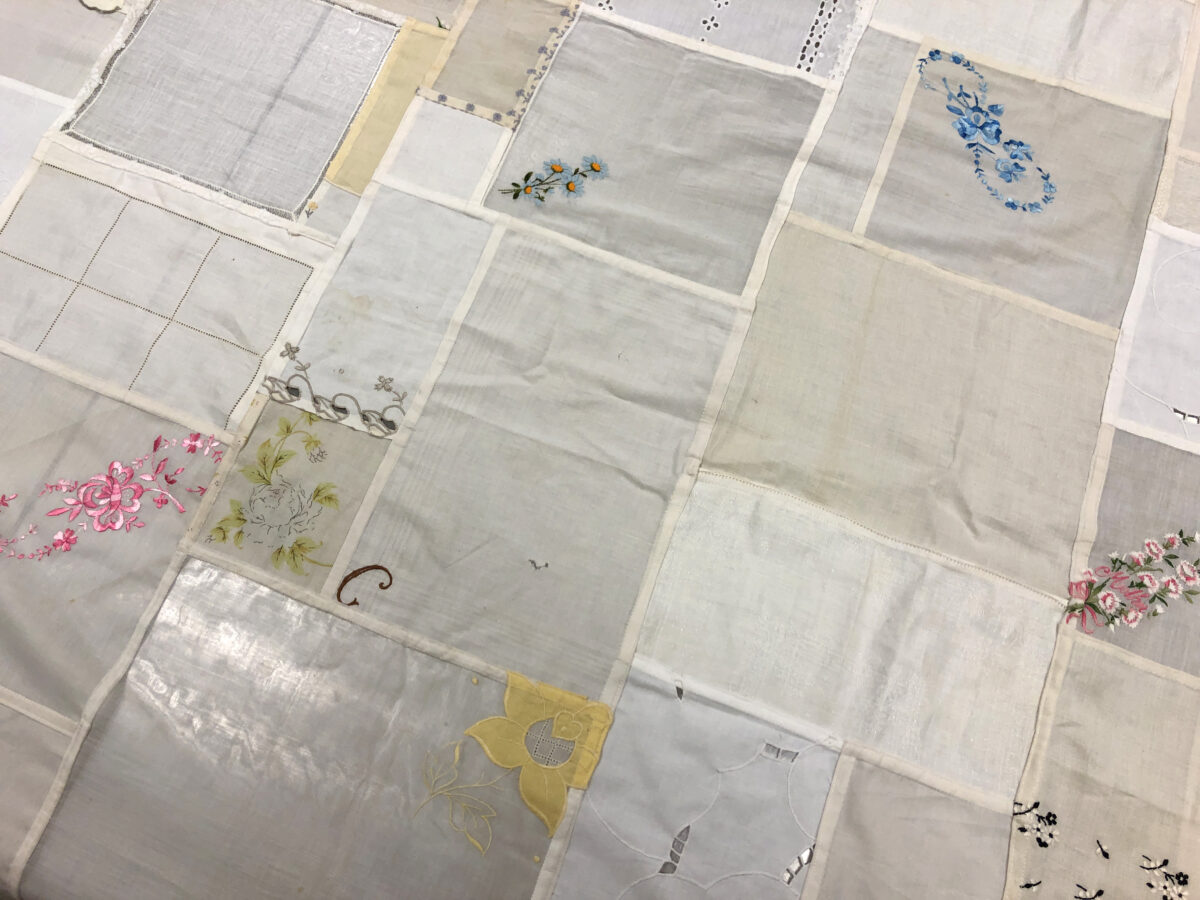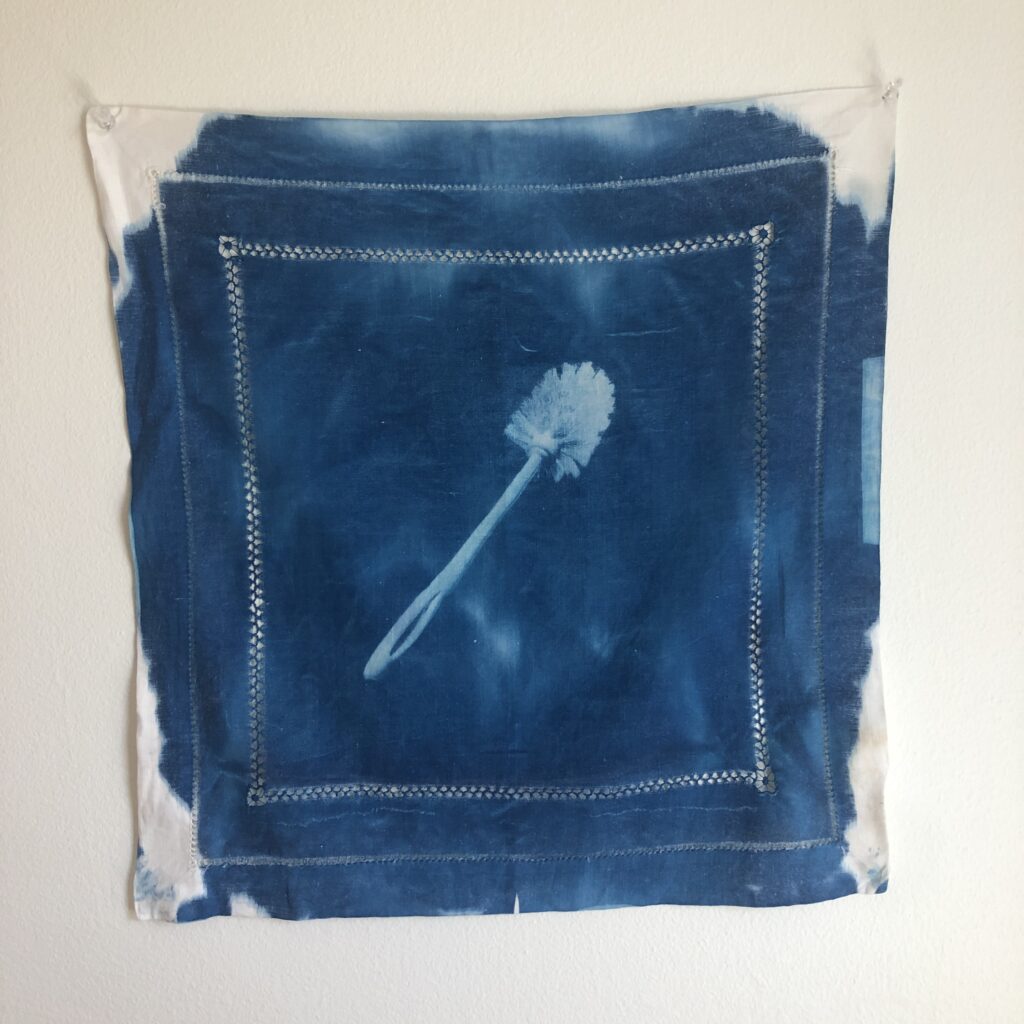As a visual artist, Monique Crabb, M.F.A. ’22, intermedia and digital arts, draws from her environment quite literally—producing textile-based artworks colored with the rich hues of plants and objects around her. This fall, she spent a month in residency at the Baltimore County Public Library, teaching workshops and engaging with library users as she created new work inspired by her surroundings. These are her reflections from that experience.

One of the most calming places to be in is a public library surrounded by people’s research, stories, and history of every place and culture from almost every perspective imaginable. At times, the amount of knowledge at my fingertips can feel daunting knowing I’ll never be able to take it all in. I’m reminded of a scene in the ’80s movie My Stepmother Is an Alien, when the main character Celeste, played by Kim Basinger, travels to earth in a model’s body to conduct research on human life and discovers books. She’s able to retain the books’ information instantly through osmosis, spanning the gamut of human emotions, and is starved for more. This scene has imprinted itself in my mind as a superpower I wish I had.
Growing up in a working class neighborhood to a mom who would every weekend pull open the large rolling door to our garage for the permanently set-up sale of our used things, and a father who worked various jobs and seemingly was never around, I spent most of my time outside of school on the streets, at friends’ homes, or playing in the woods. My parents did not engage much with books, the arts, or academia; I was mostly influenced by pop culture.
As I got older, books came to me at very specific times in my life to change my perspective and help me find my place in the world of things. One of those times was my junior year in high school when my English teacher gave the class a list of authors to pick from for a book report and I selected Kurt Vonnegut, solely on the fact that his name sounded cool and he shared a first name with Kurt Cobain. I then found myself sitting on the floor of my school’s library absorbed by the opening line of Slaughterhouse-Five: “All this happened, more or less.”
The rest of the book was an eye-opening view of one person’s experience in the world during a time so far removed from my own, yet with relatable philosophical ideas with quotes like, “All time is all time. It does not change. It does not lend itself to warnings or explanations. It simply is. Take it moment by moment, and you will find that we are all, as I’ve said before, bugs in amber.” Books allow us to travel through time and place to help us find meaning in our lives, which is a magical experience that visual arts achieves just as profoundly.

The Baltimore County Public Library month-long Artist in Residence program was a gift to take part in. Each week I walked through a sea of books and would greet the librarians on my way to their maker space, The Hive. Being there allowed me the time and space to focus on one project.
I also had the opportunity to engage with a community outside of my own through two workshops I gave on eco-printing and dyeing with food waste as well as having the studio space open to visitors while I was working. On my lunch breaks I would browse books and take walks, once visiting the nearest cemetery and other times just taking in the colors and patterns from the intersecting relationship of plants and human-made constructions in the area.
During my time in residency, I started a project using secondhand vintage linens made with open cut and intricately detailed hand and machine embroidery. I either cut up or used the entire napkin, handkerchief, or tablecloth and machine-pieced them together using pojagi, a Korean form of quilting that creates a seam on both sides of the pliable plane. These textile objects, often made by women, were and continue to be so precious that the folds and creases in them become deep from decades of being stored away unused.
I was drawn to bringing these objects out of storage, unfolding, and piecing one to the other to create a frankensteinian curtain that was large and would present as a confrontation in the middle of a room. I hadn’t fully unraveled the idea, but I knew if I put in the work that richer layers of context would reveal themselves.


Toward the end of my residency I had a library visitor come through and we chatted for a while about art, the artist’s process, and the meaning behind what is made. It was during this exchange that I had a lightbulb moment for my project of painting cyanotype directly onto the napkins and exposing stark images of tools used in the domestic world like a toilet brush. Adding this layer of context expanded my exploration of materials from domestic life by bringing attention and exposing the hidden labor behind the undervalued role of homemaker, woman, and caregiver.
It’s essential to my growth as an artist to be in new environments and around new people as well as the opportunity to step back from being so deeply inside of my artwork by engaging with communities outside of my own. Meeting the folks who took my workshops and the ones who came through the studio to ask questions about what I was working on reminded me of the importance of my role as an artist. I believe our stories connect us and often find that the narratives I encounter, whether in person or from books, inform and enrich my practice in ways I could never do alone.
Tags: CAHSS, Fall 2022, MFA, VisualArts

